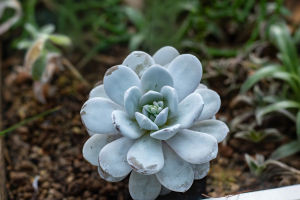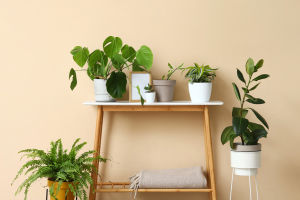Have you ever wondered whether the plants in your home are doing more than just looking pretty? What if they were also working behind the scenes to clean the air you breathe?
The idea of "air-purifying plants" has fascinated scientists and homeowners alike for decades. But what does the science actually say?
In this article, we'll explore how certain houseplants can help reduce harmful substances in the air and what limitations they might have. You'll also discover which plants are most effective and how to use them for maximum benefit.
Why Indoor Air Quality Matters
Indoor air pollution is a growing concern, especially as people spend up to 90% of their time indoors. The air inside homes and offices often contains contaminants like formaldehyde, benzene, xylene, ammonia, and volatile organic compounds (VOCs). These substances are released from furniture, cleaning products, paints, and electronics, and can contribute to health issues such as headaches, allergies, and respiratory discomfort.
Improving indoor air quality can have a direct impact on your health and well-being. While air purifiers and ventilation systems are common solutions, many people are turning to nature for a more sustainable and aesthetic alternative: air-purifying plants.
The NASA Clean Air Study
The popularity of air-purifying plants largely stems from a 1989 study conducted by NASA in collaboration with the Associated Landscape Contractors of America. The goal was to find natural ways to purify the air in space stations. The study found that certain common houseplants were effective at removing toxins such as formaldehyde, benzene, and trichloroethylene from the air through a process known as phytoremediation.
In the study, plants like peace lilies, spider plants, snake plants, and English ivy were shown to reduce the concentration of airborne chemicals in sealed chambers. The results sparked a wave of enthusiasm for using houseplants to improve air quality in homes and offices.
How Plants Purify Air
Plants purify the air through several biological processes:
• Photosynthesis: During this process, plants take in carbon dioxide and release oxygen. While this doesn't remove pollutants, it improves oxygen levels in the room.
• Absorption through Leaves: Plants can absorb airborne pollutants through their leaves and transport them to the roots, where microbes in the soil break them down.
• Microbial Action in Soil: The microorganisms that live in healthy potting soil can play a major role in filtering out harmful substances.
• Humidity Regulation: Many plants release moisture into the air, which can help reduce airborne dust and improve comfort, especially in dry indoor environments.
Limitations and Realistic Expectations
While the idea of using plants to clean your home's air is appealing, more recent studies have challenged the effectiveness of this method in typical living spaces. The NASA study was conducted in sealed chambers with controlled conditions, which do not accurately represent real-world environments.
In 2019, researchers from Drexel University concluded that it would take hundreds of plants in a single room to significantly impact air quality in the way an electric air purifier could. This doesn't mean plants are useless—it just means expectations should be realistic. Plants offer complementary benefits rather than complete air-cleaning solutions.
Top Air-Purifying Plants
If you'd like to add plants to your space with the aim of improving air quality, here are some of the most effective varieties, based on research:
• Peace Lily (Spathiphyllum): Known for removing benzene and formaldehyde.
• Spider Plant (Chlorophytum comosum): Easy to care for and effective at reducing carbon monoxide and xylene.
• Snake Plant (Sansevieria trifasciata): Absorbs toxins and releases oxygen at night.
• Areca Palm (Dypsis lutescens): Excellent humidifier and VOC absorber.
• Boston Fern (Nephrolepis exaltata): Removes formaldehyde and improves humidity.
• Aloe Vera: Apart from its skin-soothing properties, it can help clear formaldehyde and benzene.
How to Maximize Plant Benefits
If you want to get the most out of your air-purifying plants, consider these tips:
• Use multiple plants: Even though one plant has limited impact, using several throughout your home can add up.
• Choose large-leaved varieties: Bigger leaves offer more surface area for absorption.
• Keep plants healthy: Dust the leaves regularly and ensure the plant gets enough light and water.
• Use high-quality potting soil: A healthy soil biome boosts purification through microbial activity.
• Place them strategically: Position plants in areas with limited ventilation or where pollutants are more likely, such as near printers, furniture, or kitchens.
Beyond Air Quality: Additional Benefits
Even if plants don't completely purify the air, they offer other valuable perks. Their presence has been linked to lower stress, improved mood, and better productivity. A study published in Environmental Health Perspectives showed that people working in spaces with greenery reported higher satisfaction and fewer health complaints.
Additionally, the act of caring for plants can be therapeutic. It fosters mindfulness and a sense of calm—an important benefit in today's fast-paced world.
Final Thoughts: Green with a Purpose
While air-purifying plants may not be a magic solution for indoor air pollution, they are far from useless. These living companions offer modest but meaningful improvements to indoor air, along with numerous psychological and aesthetic benefits.
Why not bring one or two into your home and see for yourself? Even if the change is subtle, your mind and body may thank you for the extra touch of green.
Do you already have air-purifying plants in your home? Which one is your favorite? Let's keep the conversation growing—share your plant stories!


